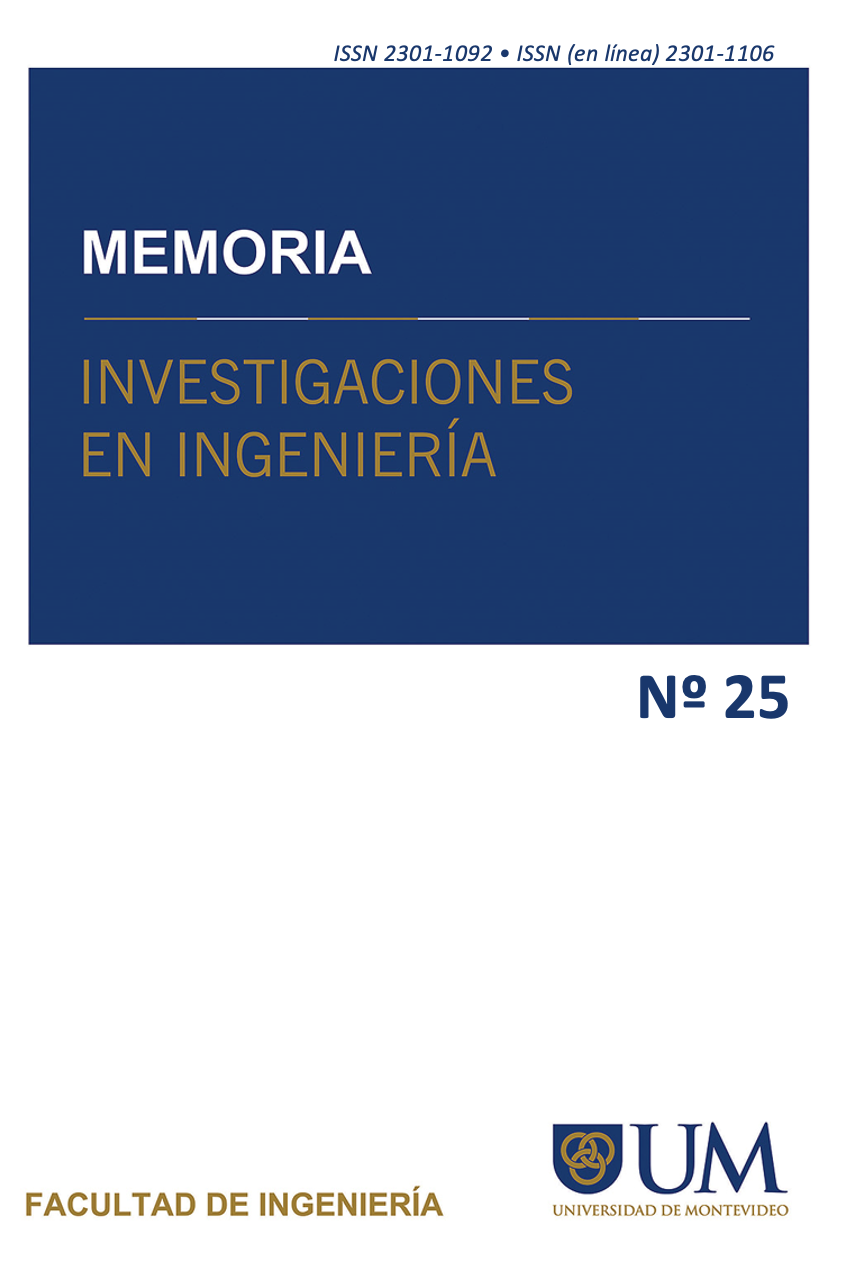Soil-Structure Interaction for Buildings with Foundation Plates by Static and Dynamic Models
DOI:
https://doi.org/10.36561/ING.25.9Keywords:
Soil-structure interaction, Soil stiffness and damping, ISE modelsAbstract
The dynamic conditions of the soil and the flexibility of the foundation are factors that condition the structural response of the buildings, however, currently it is considered for the seismic-resistant design that the soil is completely rigid and non-deformable, with no damping capacity, a condition that It is determined and established by the perfect embedment of the building in the base. This hypothetical embedment criterion facilitates the analysis and design of seismic-resistant structures, however, an important conditioning factor is ignored, since when there are variable stiffness in the strata, damping and differential settlements, the stresses and deformations in the structural elements can vary, decreasing or increasing the seismic demand. With these precedents, the study considered the dynamic conditions of the soil, through the main Soil Structure Interaction models. In the study, the modeling of a multifamily structure was carried out with the various coefficients obtained from the models developed by Winkler, Pasternak, Barkan & Savinov, Norma Rusa, Gazetas & Mylonakis, Pais & Kausel, in the soil study it was determined that the soil is classified as flexible S3, and the seismic danger zone is Z=4 corresponding to the district and province of Tumbes. With the results obtained from the modeling, it was shown that the stresses, the deformations and the vibration frequency of the structure increased, in comparison with the same structure modeled with the hypothetical criterion of restriction in the base.
Downloads
References
Bao, T. & Liu, Z. Evaluation of Winkler Model and Pasternak Model for Dynamic Soil- Structure Interaction Analysis of Structures partially Embedded in Soils. 2019, Michigan Technological University. USA.
Breveld, B. J. Modelling the Interaction between Structure and Soil for Shallow Foundations A Computational Modelling Approach. 2013. Delf University of Technology.
Bozzo, L. & Barbat, A. Diseño sismorresistente de edificios. Barcelona: Editorial Reverté, 2004.
Buitrago, L. Soil-Structure Interaction Effects on the Seismic Response of Low-Rise Eccentrically Braced Frames. 2017, Universidad de Arkansas, Fayetteville.
Civalek, O. Nonlinear analysis of thin rectangular plates on Winkler-Pasternak elastic foundations by DSC-HDQ methods. 2007, Antalya, Turquía.
Chandra, S. Modelling of Soil behavior. Instituto of Technology Kanpur. 2014, India.
Condori, C & Tavera, H. Áreas probables de ruptura sísmica en el borde occidental del Perú, a partir de la variación del parámetro “b”. (2012) Lima, Perú.
García, J. Ramsés, J. & Fernández, L. Efecto de la Interacción Suelo- Estructura en la detección de daño, usando el método de rigideces base. Sociedad Mexicana de Ingeniería Sísmica. XVIII Congreso nacional de Ingeniería Sísmica. 2011
Norma E.30. Diseño Sismorresistente. Lima: Ministerio de Vivienda, Construcción y Saneamiento, 2018.
Norma E.020. Cargas. Lima: Ministerio de Vivienda, Construcción y saneamiento, 2009.
NIST GCR 12-917-21. Soil-Structure Interaction for Building Structures. 2012, National Institute of Standards and Technology Engineering Laboratory Gaithersburg. California, USA.
Rodríguez, A., Bojórquez, E., Reyes, A., Avilés, J., & Ruiz, S. Determinación de espectros de respuesta considerando daño acumulado e interacción suelo-estructura. (2017). Ingeniería sísmica, (96), 18-38.
Villarreal, G. Interacción Sísmica Suelo-Estructura en Edificaciones con zapatas aisladas. 2009, Primera edición. Lima, Perú.
Villarreal, G. Interacción Sísmica Suelo-Estructura en Edificaciones con Plateas de cimentación. 2017, Primera edición. Lima, Perú.
Published
How to Cite
Issue
Section
License
Copyright (c) 2023 Raúl Olivera, Genner Villarreal

This work is licensed under a Creative Commons Attribution 4.0 International License.






















